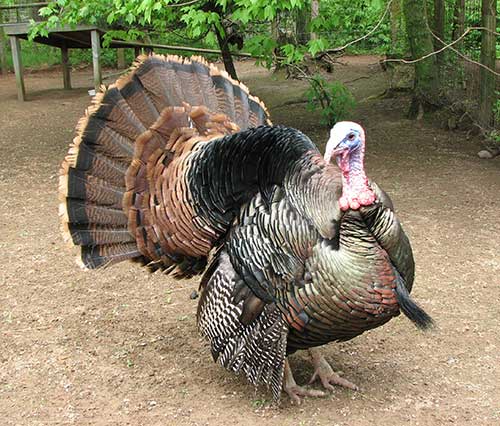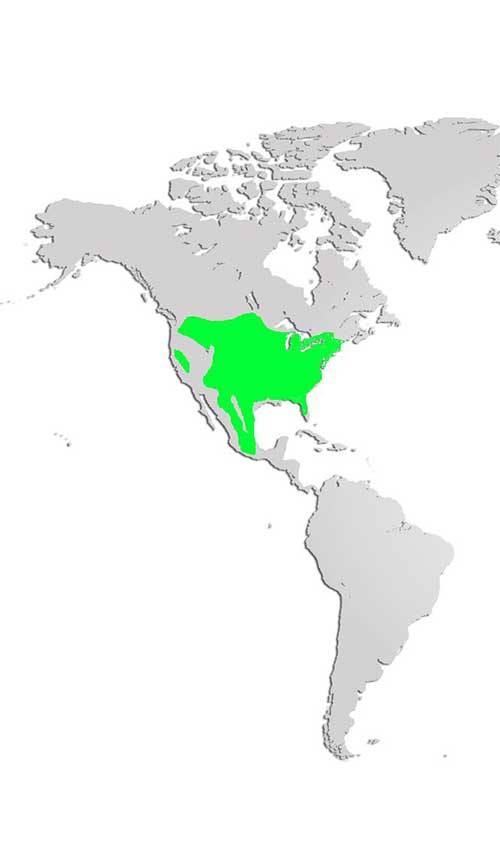Wild Turkey
Class: Aves
Order: Phasianidae
Family: Meleagridinae
Genus: Meleagris
Scientific Name: Meleagris gallopavo
Description: Males (toms) are 120 cm (47 in) long from beak to tail and weigh 6.5 to 8 kg (14-18 lbs). Females (hens) are half that weight. Wild turkeys are long legged with a naked head and neck, and a long, broad tail. Males have a noticeable black "beard" on their breast, a bluish head, and red wattles on the throat and neck. The body is bronze and the tail is rust colored. Females are smaller and not as colorful. Toms gobble while hens cluck.
Distribution and Habitat: Native to North America, wild turkeys can be found throughout much of the United States from New England to Illinois, and southern Ontario, Manitoba, and Saskatchewan. They live in open, mixed woodlands traveling in flocks during the day and roosting in trees at night. They are weak flyers, running to avoid danger.
• See Map
Diet: Omnivores, wild turkeys eat insects, grasshoppers, seeds, berries, and acorns.
Life Cycle: Male turkeys are polygamous, meaning they mate with more than one female. Hens lay 8-15 large, reddish brown eggs and incubate them for 28 days. The chicks roost on the ground for the first two weeks, and are easy prey for opossums, raccoons and other wildlife during that time.
Did you know? Wild turkeys can swim if they need to, by tucking in their wings, spreading their tail, and kicking.



